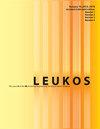确定与怀疑
IF 2.6
2区 工程技术
Q2 CONSTRUCTION & BUILDING TECHNOLOGY
引用次数: 0
摘要
照明科学和照明工程等领域的研究人员和从业人员努力在客观性和怀疑论之间取得平衡。当一个立场可以得到有力和可靠的数据支持时,信念是有根据的。在美国,视力随着年龄的增长而退化。当支持数据不完整或不能令人信服时,怀疑是有理由的。例如,虽然毫无疑问,光介导非视觉反应,如褪黑激素抑制,但这种知识应该以何种方式和程度告知照明实践尚不清楚。当建议远远超出人们确信的事实时,谨慎的做法是持怀疑态度。作者和演讲者也通过叙述来说服他们的听众——这些故事将精心挑选的一系列被认为是真实的观察联系起来。当结论可以得到可信数据的支持时,结论是令人信服的,然而数据往往是精心策划的,部分的,甚至当显示内部有效性时,也可能不适用于其他情况。科学观点往往是通过令人信服的叙述记录的内在有限的数据来证明的。对于那些寻求真理的人来说,这个过程是令人兴奋的。观点被质疑,警告被陈述,不同的解释被考虑,确定和怀疑的程度被权衡。对于科学进程之外的人来说,怀疑可能会令人不安,而确定性可能会让人安心,但对于研究人员来说,情况恰恰相反。怀疑推动科学走向更深入的理解,而确定性可能是阻碍进步的好奇心的祸根。虽然总是需要更多的研究和更多的数据,但可以根据已知的情况做出深思熟虑的选择。健康的做法是承认知识是不完整的,不要让理性的不确定性和非理性的信念阻碍进步。面对新的数据,改变自己的想法不是失败,而是成长的标志。正式话语在科学文献中展开,它依赖于同行评审来评估科学作品的可信度和真实性。但是,科学工作的最终目标,特别是在像《白血病》这样的应用期刊上,不是发表文章,而是研究成果对世界产生积极影响的潜力。这需要将想法或技术从科学界转移给公众,这一步骤有时会遇到阻力。近年来,真理的客观标准普遍受到侵蚀。公众舆论受个人信仰的影响,而个人信仰又受情感诉求的影响。半真半假和彻头彻尾的谎言有时被用来误导人们。说错了就是真的吗?一个公正的读者可能会回答“不”,但在包括政治和公共政策在内的重要生活领域,理性和幻想之间有一条模糊的界限。对一些人来说,一再重复令人作呕的错误陈述已经在科学本身播下了怀疑的种子。LEUKOS依靠广泛的学者网络来评估提交的作品。审稿人敏锐的观察和深度的评论让我深受启发和欣赏。建设性的评论使作者能够改进被接受的手稿的最终版本,指导我决定接受和拒绝什么,并且是LEUKOS努力保持的高标准的命脉。怀疑和怀疑是寻求真理的基本属性,我们邀请你以这种心态来阅读《白血病》。同时,请放心,这些页面上出现的作品已经过同行的审查,并代表了照明科学研究和发现的前沿。本文章由计算机程序翻译,如有差异,请以英文原文为准。
Certainty and Doubt
Researchers and practitioners in fields that include lighting science and illuminating engineering endeavor to balance objectivity with skepticism. Conviction is warranted when a position can be supported by robust and reliable data—e.g., vision deteriorates with age. Skepticism is warranted when supporting data are incomplete or unconvincing. For example, while there is no doubt that light mediates nonvisual responses such as melatonin suppression, the manner and degree to which that knowledge should inform lighting practice is less clear. When recommendations run too far ahead of what is known with conviction, it is prudent to be skeptical. Authors and speakers also persuade their audiences through narratives—stories that connect carefully selected sets of supposedly true observations. Conclusions are convincing when they can be supported by credible data, yet data tend to be curated, partial, and even when exhibiting internal validity may not apply to other contexts. Scientific viewpoints tend to be justified with intrinsically limited data that is chronicled through cogent narratives. For people seeking the ground truth, this process is exciting. Ideas are interrogated, caveats are stated, alternative explanations are considered, and degrees of both certainty and doubt are weighed. To someone outside of the scientific process, doubt may appear troubling, and certainty may be reassuring, but to a researcher, it is quite the opposite. Doubt pushes science toward deeper understanding, whereas certainty can be the bane of curiosity that impedes progress. While more research and more data will always be needed, considered choices can be made based on what is known. It is healthy to acknowledge that knowledge is incomplete, letting neither rational uncertainty nor irrational conviction stand in the way of progress. When faced with new data, changing one’s mind is not a failure, but a sign of growth. Formal discourse unfolds in the scientific literature, which relies on peer reviews to assess the credibility and veracity of scientific works. But the end goal of scientific works, especially in applied journals like LEUKOS, is not publication of the article, but the potential of the work to positively influence the world. This requires transfer of ideas or technologies from the scientific community to the public, a step that sometimes meets resistance. In recent years, there has been widespread erosion in the objective standards for truth. Public opinions are shaped by personal beliefs that are themselves influenced by appeals to emotion. Half-truths and outright falsehoods are sometimes promulgated to misinform. Does stating something false makes it true? An impartial reader might answer “no,” but in important domains of life that include politics and public policy, there is a blurry line between the rational and the fanciful. The repetition of false statements repeated ad nauseam and with conviction, has for some sowed seeds of doubt in science itself. LEUKOS relies on a wide network of scholars to assess submitted works. I am inspired by and appreciative of the incisive observations and depth of reviewer comments. Constructive commentary enables authors to improve final versions of accepted manuscripts, guides my decisions about what to accept and reject, and is the lifeblood for the high standards that LEUKOS endeavors to maintain. Skepticism and doubt are essential attributes for truthseeking, and you are invited to read LEUKOS with that mind-set. At the same time, be assured that the works that appear in these pages have been vetted by your peers and represent the leading edge of lighting science research and discovery.
求助全文
通过发布文献求助,成功后即可免费获取论文全文。
去求助
来源期刊

Leukos
工程技术-光学
CiteScore
7.60
自引率
5.60%
发文量
19
审稿时长
>12 weeks
期刊介绍:
The Illuminating Engineering Society of North America and our publisher Taylor & Francis make every effort to ensure the accuracy of all the information (the "Content") contained in our publications. However, The Illuminating Engineering Society of North America and our publisher Taylor & Francis, our agents, and our licensors make no representations or warranties whatsoever as to the accuracy, completeness, or suitability for any purpose of the Content. Any opinions and views expressed in this publication are the opinions and views of the authors, and are not the views of or endorsed by The Illuminating Engineering Society of North America and our publisher Taylor & Francis. The accuracy of the Content should not be relied upon and should be independently verified with primary sources of information. The Illuminating Engineering Society of North America and our publisher Taylor & Francis shall not be liable for any losses, actions, claims, proceedings, demands, costs, expenses, damages, and other liabilities whatsoever or howsoever caused arising directly or indirectly in connection with, in relation to, or arising out of the use of the Content. Terms & Conditions of access and use can be found at http://www.tandfonline.com/page/terms-and-conditions .
 求助内容:
求助内容: 应助结果提醒方式:
应助结果提醒方式:


